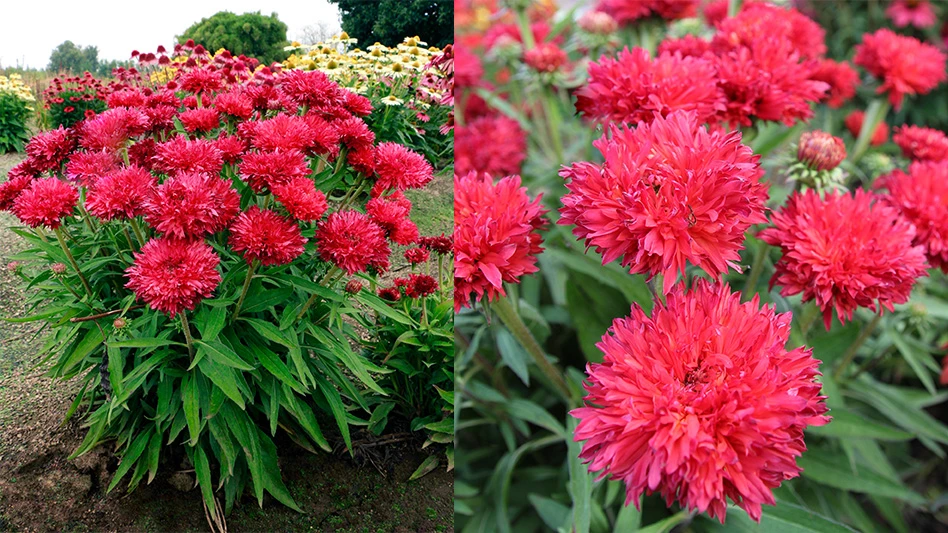 As a grower you’re at risk for Lyme disease, an infection caused by Borrelia burgdorferi, a bacterium, and transmitted through bites from infected eastern black-legged ticks (also known as deer ticks), as well as western black-legged ticks. Lyme disease is not spread from person to person. Cases of Lyme disease are most common in large areas of the northeast, as well as in the Great Lake states.
As a grower you’re at risk for Lyme disease, an infection caused by Borrelia burgdorferi, a bacterium, and transmitted through bites from infected eastern black-legged ticks (also known as deer ticks), as well as western black-legged ticks. Lyme disease is not spread from person to person. Cases of Lyme disease are most common in large areas of the northeast, as well as in the Great Lake states.
The disease has a number of debilitating symptoms, including severe headaches, arthritis, cardiac abnormalities and central nervous system involvement leading to neurological disorders. Lyme disease is preventable by reducing the chances of tick bites; prompt, proper removal of embedded ticks; and prompt medical treatment when symptoms are detected. Detected early, Lyme disease is treatable.
Legislation
The Professional Landcare Network (PLANET) has supported a bill to establish an advisory committee to educate the public on tick-borne diseases, such as Lyme disease. Lyme disease can be deadly, and more education on the subject could result in faster and better treatment.
H.R. 610, which would establish the Tick-Borne Diseases Advisory Committee and H.R. 611, the Lyme and Tick-Borne Diseases Prevention, Education and Research Act. Both bills were introduced Feb. 12 and referred to subcommittee on health three days later.
Tom Delaney, director of government affairs for PLANET, said the organization had supported the bill when it was introduced two years ago, but it lacked the support necessary to pass and had to be re-introduced.
“In an era of cutbacks, it’s hard to get support for bills like this,” Delaney said.
“The problem is it doesn’t have enough co-sponsors. Congress is in a mode where anything that costs money or involves more government (is going to have a tough time passing)… but there are places where only government can do the things for which the private industry feels there is no need or profit.”
Consider discussing the issue with your legislators and request that they co-sponsor a bill in support of prevention and education programs, Delaney says.
“The best thing for them is to protect their employees by making them more aware,” he said. “Hispanics are sometimes more prone to it, because they don’t read the English publicity about the problem.”
What you need to know about Lyme disease
Area: Most ticks favor a moist, shaded environment, especially areas with leaf litter and low-lying vegetation in wooded, brushy or overgrown grassy habitat. Be alert for ticks when you are in these areas.
Symptoms: The first sign of infection, according to the Centers for Disease Control and Prevention, is usually a circular, spreading rash called erythema migrans or EM. This rash occurs in approximately 60 - 80 percent of infected persons and begins at the site of a tick bite after a delay of three to 30 days. A distinctive feature of the rash is that it gradually expands over a period of several days, reaching up to 12 inches (30 cm) across.
Removal: Got a tick? Consider the following:
- Using a pair of fine-pointed tweezers, grasp the tick by the head or mouthparts right where they enter the skin. DO NOT grasp the tick by the body.
- Pull firmly and steadily directly outward. DO NOT twist the tick out or apply petroleum jelly, a hot match, alcohol or any other irritant to the tick in an attempt to get it to back out. These methods can increase the chances of the tick transmitting the disease.
- Clean the bite with disinfectant.
- Watch the site of the bite for the appearance of a rash beginning 3 to 30 days after the bite. If a rash or other early symptoms develop, see a physician immediately.

Explore the June 2013 Issue
Check out more from this issue and find your next story to read.
Latest from Nursery Management
- The HC Companies, Classic Home & Garden merge as Growscape
- Eason Horticultural Resources will now officially be known as EHR
- BioWorks receives EPA approval for new biological insecticide for thrips, aphids, whiteflies
- Ellen Mackenbach-Lakeman appointed new CEO of Dümmen Orange
- Southern Garden Tour sets 2025 dates for trial garden open houses
- New book explores plants that thrive in Rocky Mountains
- American Floral Endowment establishes Herman Meinders Memorial Tribute
- These companies are utilizing plastic alternatives to reduce horticultural waste





